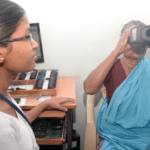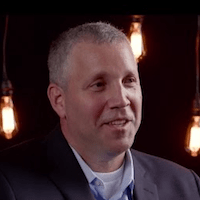Glasses for the Masses: Because It’s Easier to Navigate a Path out of Poverty When You Can See
Clean water, nutritious food, basic health care – we all know these essentials underpin poverty reduction, school achievement and economic growth. What if I told you that eyeglasses could do that too?
Eyeglasses are not lifesaving, but they are life-changing. They boost students’ learning and school achievement and help adults to be more productive and earn a better living. And they are easy to deliver through a wide range of business formats and social service interventions.
Yet 2.5 billion people do not have the eyeglasses they need to earn and learn. Yes, that many! And 70 percent of people requiring vision correction with glasses simply need a pair of ready-made reading glasses that can be dispensed without a prescription. The kind that you might pick up at a pharmacy or bookshop if you live in the US or Europe.
That so many people still lack access to a technology that is over 700 years old is hard to comprehend given the affordability of vision screening and eyeglasses. At VisionSpring, we estimate the cost of getting someone into their first pair of eyeglasses to be $5. The eyeglasses themselves we can source for as little as $1.
On this World Sight Day, Oct. 12, we rally together with partners working in livelihoods, health, education, road safety, manufacturing and agriculture to create access to eyeglasses as a cost-effective, poverty reduction tool. Together, we see eyeglasses as a simple input to achieving many development objectives. And when we succeed in bridging the visual divide, the world economy stands to gain a whopping $220 billion a year, principally earned by people living in the base of the economic pyramid.
Glasses and better vision help create a more productive workforce. We’ve found that in northern India a pair of reading glasses can increase individual productivity by 35 percent, translating to a 20 percent average increase in a wearer’s annual income. A simple pair of eyeglasses can also be the difference between working and not working. A mobile phone and TV repairman in Bangladesh told me succinctly, “Without these, I would be retired.”
Glasses also improve students’ learning outcomes, setting the next generation on a trajectory for success. The 2014 “Seeing is Learning” study of 250 primary schools in China demonstrated that correcting students’ vision improved math scores so much so that learning gains were the equivalent of one-third to one-half a year of additional schooling.
To create access to vision correction and all of the social and economic benefits that come with eyeglasses, VisionSpring works with over 200 hospitals, clinics, and networks of community health workers. Many health care providers are introducing vision services and eyeglasses for the first time, creating new points of access for adults and children. Selling eyeglasses is also good for organizational balance sheets and sustainability, bringing in a new source of revenue, including commissions for frontline workers conducting outreach and sales in communities.

A Kenyan fruit vendor can see text messages now that she has gotten her VisionSpring glasses. Photo by Ruth Mugo
This summer, we introduced community-based sales of reading glasses with BRAC in Uganda, based on the successful Reading Glasses for Improved Livelihoods program in Bangladesh. We have just trained the first cohort of health promoters to screen for blurry near vision and incorporate reading glasses as a margin-positive item in their bundle of life-changing products. As we roll out the program to 4,000 health promoters, we will create access to vision correction for 800,000 adults in a country where as few as 5 percent of people who need eyeglasses have them.
We also are working with nontraditional vision actors because clear vision is more than a health intervention. This World Sight Day, we are pleased to announce a partnership with Williams-Sonoma Inc. and Target to introduce vision screenings for at least 20,000 workers who make goods in India and the Philippines. Based on pilot tests that we conducted with West Elm’s textile, rug and handicraft suppliers, we anticipate that over 50 percent of the workers to be screened will present with blurry vision and that 80-90 percent of workers will be acquiring their first-ever pair of prescription or reading glasses.
This Clear Vision Workplace initiative stems from Target and Williams-Sonoma Inc.’s commitments to worker well-being, and our shared view that clear vision is a triple win. Workers gain increased income earning potential and more working years; suppliers gain greater productivity, and buyers see higher quality products. The collaboration is also a great example of companies pooling resources to extend services to workers. We invite other brands and producers to join us. Together we can ensure workers and families see well so that they can do well.
Gaining ground on a problem of this magnitude requires collaboration. We can’t do it alone. The problem of vision correction and access to eyeglasses is also too big to solve with charity alone. As such, VisionSpring employs social enterprise solutions. Using business-to-business, third-party payer and retail sales models, we earn income that stretches philanthropic dollars further and create the opportunity for partners to do the same.
They say seeing is believing. To see for yourself on World Sight Day, Oct. 12, follow our live video stream on Twitter @VisionSpring and meet people getting glasses for the first time in Nigeria and India.
To create access to vision screening and eyeglasses in your community, workplace, transit hubs, community health services or schools, contact us at globalpartners@visionspring.org
Under Ella R. Gudwin‘s leadership, VisionSpring is working to sell 10 million pairs of radically affordable eyeglasses by 2020, creating $2.16 billion in economic impact at the household level.
Homepage photo of Kamal Ahmed, a teacher in Bangladesh, is by Joel Collins.
- Categories
- Health Care, Social Enterprise



